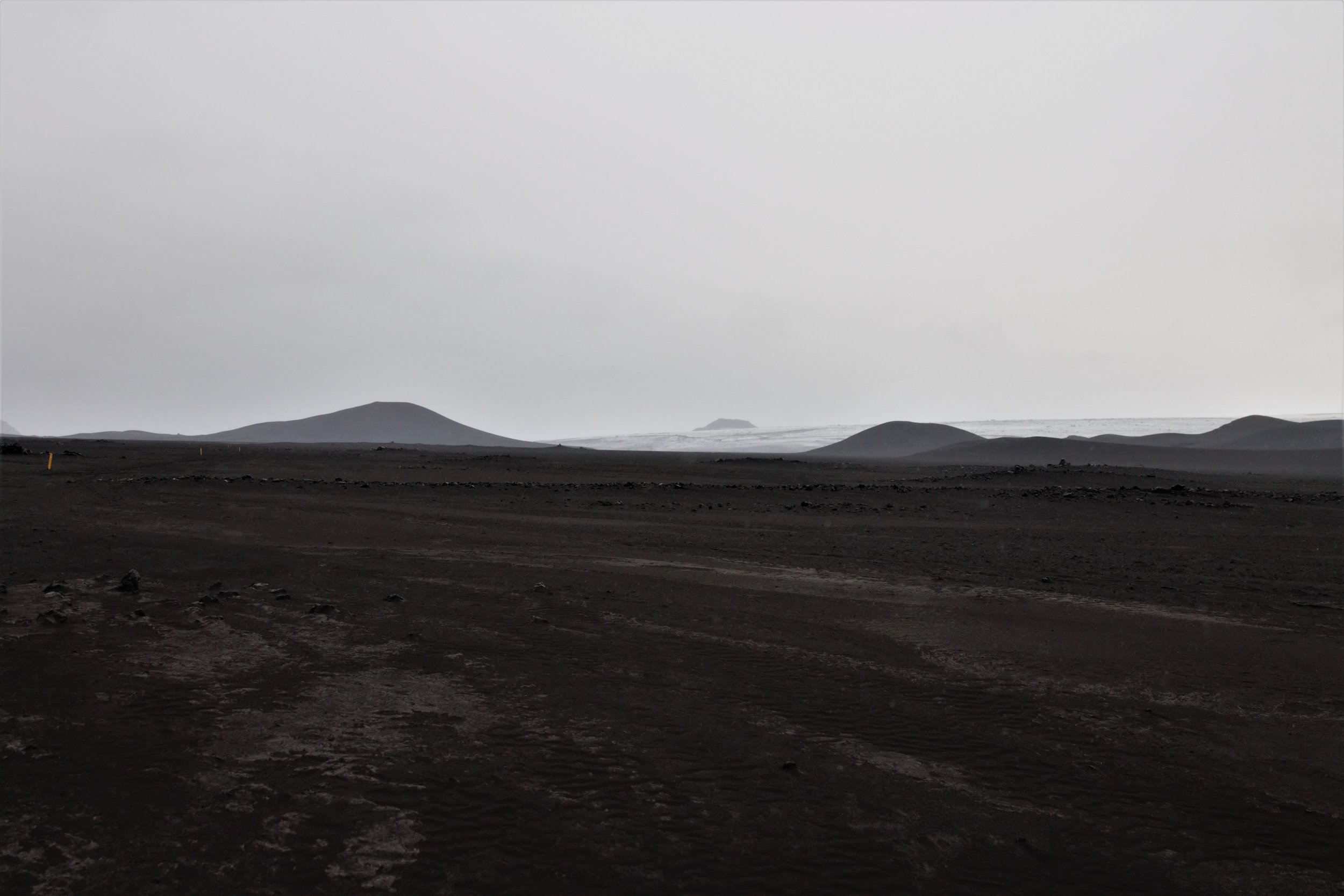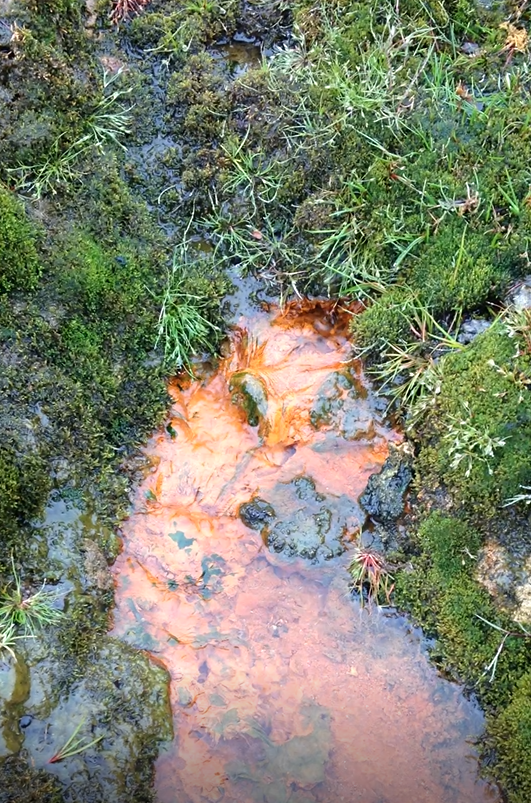The bright orange color that is the hallmark of a geothermal hot spring, here at the "secret spot" we discovered on Day 5.
During our interview at Basecamp on day 4, Björg shared something pretty special with me and Donal: a secret spot in the highlands, where a hot spring with a beautiful view and swimming pools can only be reached by hiking through the hills. Björg occasionally brings tour groups there, but for the most part it is a spot only locals visit. What's more, it's a site that almost disappeared forever.
A few years ago, a power company planned to build a dam that would have flooded the valley where the hot spring flows. A lake exists there already, but the dam would have risen the lake enough to cover the spring entirely. It was a place that fit so perfectly into what we have been talking to people about that Donal and I had to see it for ourselves.
We headed off into the highland along the same path we had taken the day before, but passed by Markarflótsgljúfur to take a route through a vast coal-black ash desert. To our left were the green mountains we had climbed the night before; to our right, part of the glacier Mýrdalsjökull gleamed slate grey and electric blue in the distance like some massive, frozen wave coming over the horizon.
The ash plains. What looks like the ocean in the distance is actually glacier.
The only signs of humanity here were battered yellow road markers and two satellite reflectors planted on a frozen lava flow. NASA put those reflectors here to measure changes in the land's elevation, which rises and falls with the breath of volcanic forces not far below the surface. Indeed, all day on Monday we were catching whiffs of sulfur carried by the area's rivers; alongside a small cluster of earthquakes that happened late in July, these are signs that some interpret as a signal that Katla, the volcano beneath Mýrdalsjökull, might be waking up from her slumber.
The NASA reflectors watching for earthquakes and other pre-eruption signals. They very much contributed to the sense we were on another planet.
Eventually we veered back into the green, headed towards the hut Björg had given us as a reference point for the spring. We parked by the hut beneath another curtain of misty rain, finding a sign that gave the name of the spring — but included no measurement of how far of a hike it was. Regardless, we shrugged on our rain gear, packed our bathing suits, and headed out.
The kilometers began to tick by as we wound up and down over hills and small mountains, taking several steeply graded trails that seem to be characteristic of hiking trails here. About two kilometers in, Donal noticed that the rain was growing thicker in the distance and headed in our direction, while we still had no indication of how much longer we would be hiking. For a few minutes we debated turning back. I'm glad we didn't.
As we climbed down into the valley a kilometer or so past our moment of hesitation, we started to notice signs that we were getting close to our destination.
A small geothermal spring bubbling up from the ground, carrying the characteristic orange sediment or algae with it. Here the water was warm, but not hot, telling us we still had further to go.
Then, in the distance, we noticed steam coming up from behind a hill. As we got closer we saw it was rising from two pools spaced beside one another, with orange and yellow streaks running off its edge and into a separate stream. Even when we reached the site of the hot pools, there were still surprises awaiting: a gorgeous cold glacial waterfall tumbled to the left of the hot spring, while a hot geothermal waterfall fed the pools from the right.
The cold waterfall just past the geothermal pool.
We wasted little time getting into our bathing suits and gently wading in. The lower pool was the cooler of the two, but was the perfect temperature for soaking in the chilly rain. The bottom was coated with a soft, greenish-brown mud that your feet sunk into for 4-6 inches before hitting rock. Its texture was something I can't really explain; the closest comparison I can make is the mud in a salt marsh... but if that mud were made of cotton candy.
We sat in the spring for over an hour, resisting the feeling of overheating, just in awe of the spot. Birds chirped and flitted past. Water burbled quietly to our right and our left. The wind was slight, stirring steam around our faces. In front of us the valley unfolded, the bright bluish-green lakes that would have covered this spot reflecting silver in the distance.
It was a powerful moment: knowing that if the original plans for this valley had gone through, this place would no longer exist. Though outsiders might think sites like this are a dime a dozen in Iceland, Donal emphasized that they're much rarer than one might think. In some places the springs are too hot or too diluted by glacial water to be comfortable; in some, they don't feed pools, so there's no place to sit or swim. And in very few are there views like this, and the feeling of absolute isolation from the outside world.
Me in the hot spring. (Amaaaaazing) photo by Donal Boyd.
Of all of the places I've been on this trip, and all of the people I've spoken to, this may be experience that made the greatest impression. I understand fully what Icelanders are fighting for when they resist power companies that want to dam their rivers. I understand why a national park seems an attractive option, one that might protect places like this for generations. And I understand why, as unlikely as it is for much of the country, people are worried that tourism might push the government to blast roads through these desolate spaces and bring hordes of people to places that are crystallized by solitude. It's something that you can certainly understand through reading about these spots, but only by going to one has this concept really hit home.








